Us History Chapter 15 Section 3 Guided Reading and Review Answers
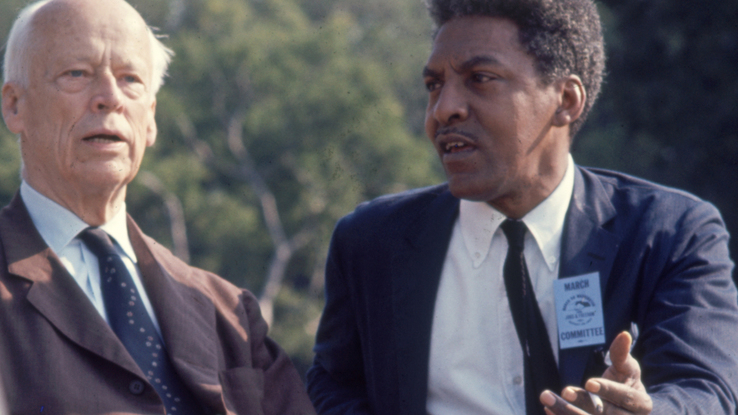
While Malcolm X, Rosa Parks and of course Martin Luther Male monarch Jr. are all well-known leaders in America'south civil rights motion, the accomplishments of that era were the work of more than than just a few individuals. Thousands marched, organized, educated and more to build a improve order, and as a result, some leaders fell by the wayside of many of today's history books. These are just some of the astonishing civil rights leaders you lot may have never learned near.
Claudette Colvin
Although Rosa Parks may be famous for refusing to give upwardly her seat for a white human being, Claudette Colvin stood her footing nine months earlier — and at the age of 15 rather than 42. She and 3 of her friends were sitting in a row when a white woman boarded the bus, and the driver demanded that all four of them move. Three did. Claudette didn't.
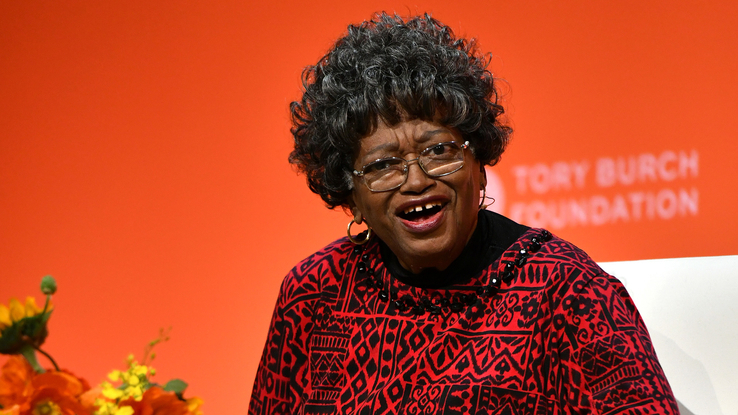
She explained that it was her constitutional right to sit at that place. "It felt," Colvin later explained, "as though Harriet Tubman'southward easily were pushing me downwards on one shoulder and Sojourner Truth's easily were pushing me down on the other shoulder."
Colvin's books were knocked from her hands, and she was manhandled off the motorbus and later placed in jail before being bailed out by her parents. The National Association for the Advancement of Coloured People (NAACP) considered promoting her as a key figure in the fight against segregation, but information technology ultimately chose not to because she was a teenager. She as well shortly became pregnant, which organizers feared would distract from the broader struggle.
All the same, along with Aurelia Southward. Browder, Susie McDonald and Mary Louise Smith, Colvin became one of four plaintiffs in the case of Browder vs. Gayle, which saw Montgomery, Alabama's coach policies thrown out as unconstitutional. Colvin moved to New York City two years later and became a nurse'south aide.
Bayard Rustin
While Martin Luther King Jr. was the face of the civil rights rallies of the '60s, Bayard Rustin was the human being backside the scenes who organized them. Raised past his teenage mother and Quaker grandparents, he was drawn to the Young Communists League while attention New York's City College during the 1930 considering of their support for racial equality. However, he left when the Communist Party shifted abroad from civil rights work after 1941. He so joined the Fellowship of Reconciliation (FOR), co-founded the Congress of Racial Equality (Core) and became an agile campaigner for civil rights.
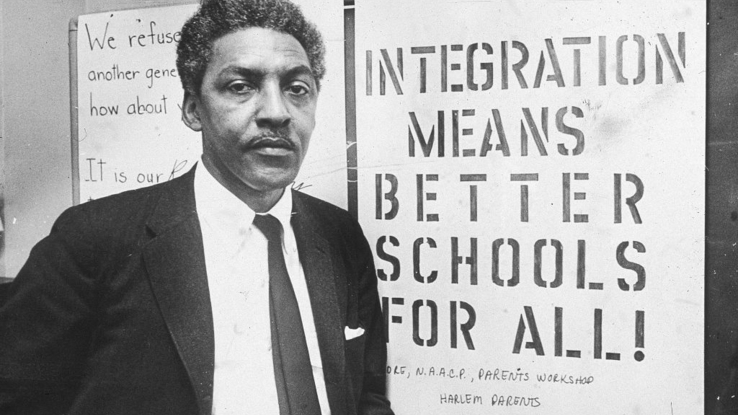
Rustin's accomplishments are about likewise numerous to listing. He participated in CORE'due south Journey of Reconciliation, the predecessor to the subsequently Liberty Rides that ended bussing segregation, and concluded upward on a chain gang as a result. He used that experience to publish several newspaper articles that led to the reform of such gangs. In 1948, he went to India to run across Mahatma Gandhi'southward irenic practices in activity, and he later traveled to W Africa to work with different colonial independence movements. He became a close advisor to Martin Luther King and played an instrumental role in everything from 1963's March on Washington for Jobs and Freedom to helping to draft Male monarch's Memoir, Stride Toward Freedom.
Rustin became a target of J. Edgar Hoover and the FBI early on because of his communist ties, and his 1953 conviction on charges of homosexual activity acquired tension even with other civil rights leaders. Nonetheless, Rustin connected his piece of work, and in the 1980s, he finally opened up about his sexuality. He played a key role in getting the NAACP to have action against the AIDS crisis. He died in 1987.
Shirley Chisholm
Built-in to immigrant parents from British Guiana and Barbados, Shirley Chisholm graduated from Brooklyn College in 1946. She was an instruction consultant for New York City's daycare system and was active in the NAACP before representing Brooklyn in the New York'due south state legislature from 1964 to 1968. She then achieved success on the national stage by winning ballot to the House of Representatives, where she remained until 1981. She was an ardent opponent of the Vietnam War and a supporter of ballgame rights and the Equal Rights Amendment.
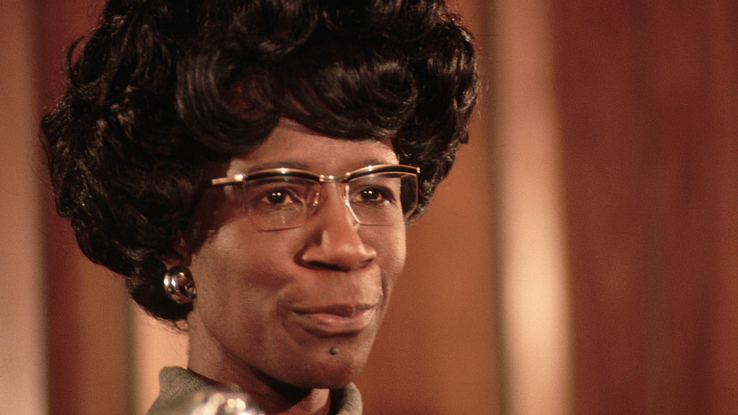
Chisholm was also both the first Black person and starting time woman to run for the nomination of a major party in the United States. Though she only received 152 delegate votes at the 1972 Autonomous National Convention, her run still foreshadowed even greater political accomplishments for women and people of color in the years and decades to come.
Benjamin Mays
Martin Luther Male monarch Jr. in one case described Benjamin Mays as his "spiritual mentor." Built-in in 1894 Hezekiah and Louvenia Carter, who were former slaves, Mays grew upwardly to get a doctorate from the University of Chicago and was ordained as a Baptist government minister. He subsequently became president of Morehouse College.
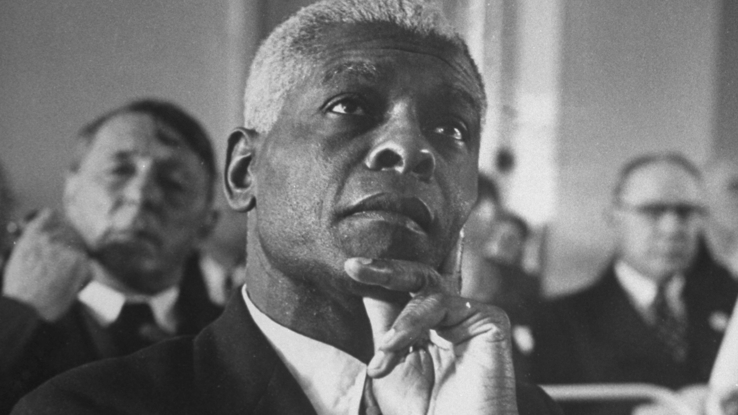
While at Morehouse, Mays delivered weekly addresses at the higher's chapel, and it was these speeches that offset drew a young Martin Luther Male monarch Jr. to him. Male monarch began meeting with Mays to discuss theology and world affairs after the weekly addresses, and Mays began to have Sunday dinners with the Male monarch family.
Mays went on to be ane of Rex's almost prominent supporters. When mass arrests led King'south begetter to ask him to step down every bit a leader in the Montgomery omnibus cold-shoulder, Mays vocally supported Rex's decision non to practise and so. He gave the benediction at the March on Washington for Jobs and Liberty in 1963. Even subsequently King's assassination, Mays continued to fight for ceremonious rights and became the first Black president of the Atlanta Board of Didactics.
Nannie Helen Burroughs
Like Mays, Nannie Helen Burroughs' parents had experienced the horrors of slavery immediate. Later on her male parent died, she and her mother moved to Washington D.C. Burroughs performed well in schoolhouse, but despite her success, she was unable to discover a task equally a public school teacher. As a issue, she decided to found her own school for Black American women without the means to pay for an education.
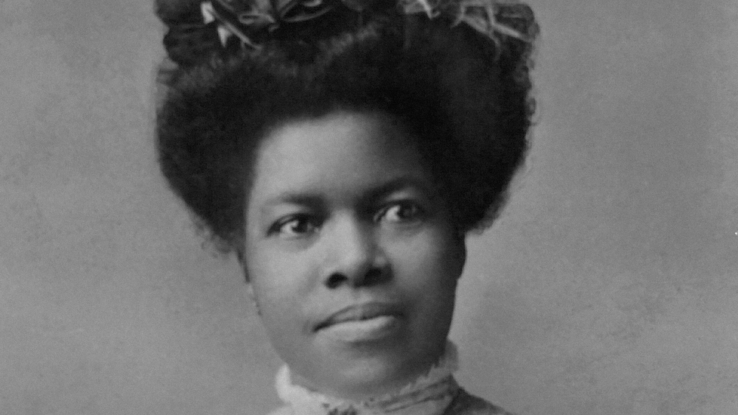
Some civil rights leaders of the time, such equally Booker T. Washington, doubted Burroughs' ability to raise money for the school. Because of donations from local black women and their families, nevertheless, Burroughs was yet successful, and the National Trade and Professional School for Women and Girls (NTPSG) in 1909 with the motto, "We specialize in the wholly impossible." At age 26, Burroughs was the first president.
The NTPSG was unusual in that it combined a classical instruction along with vocational skills meant to help black women find jobs in modern society. Blackness history was also a required form, a largely unprecedented move for the fourth dimension. While the original school merely consisted of a small farmhouse, in 1928, it grew to include a larger building with 12 classrooms and additional facilities. Burroughs died in 1961, but her efforts to provide educational activity and opportunity regardless of race or gender paved the way for further efforts to secure civil rights.
Source: https://www.reference.com/history/influential-civil-rights-leaders-fba3aa8663d7f466?utm_content=params%3Ao%3D740005%26ad%3DdirN%26qo%3DserpIndex
0 Response to "Us History Chapter 15 Section 3 Guided Reading and Review Answers"
Postar um comentário